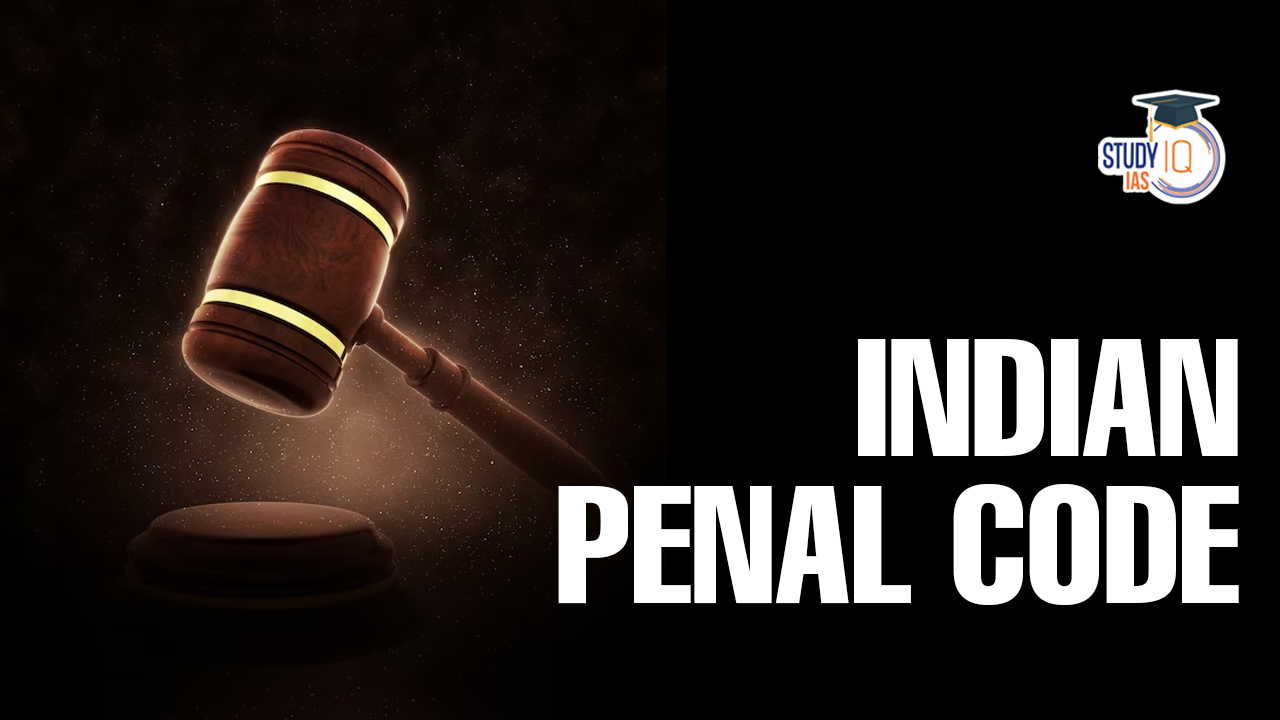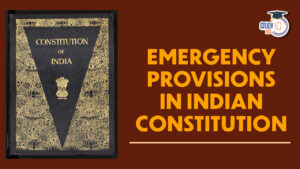Table of Contents
Indian Penal Code
The Indian Penal Code (IPC) was created in 1860 based on the recommendations of the country’s first law commission, which was headed by Lord Macaulay and established in 1834 as part of the Charter Act of 1833. The Princely States, which had their own courts and legal systems until the 1940s, were the only princely states that were not covered by the Code when it entered into force on January 1, 1862, during British control, and it was applicable to all of the then-British India.
Indian Penal Code Meaning
The Indian Penal Code outlines what behaviours are considered crimes as well as the associated punishments. This Code is exhaustive in the areas in which it proclaims the law and unites the entire body of legislation on the issue. This body of substantive legislation is known as the Indian Penal Code. A law that specifies both criminal and civil law offences and penalties is said to be substantive law.
The law that defines punishable offences, along with their consequences or punishments, or both, is called the Indian Penal Code. The five kinds of penalties under this code are death, life in prison, general prison, confiscation of property, and fine. Mohammedan Criminal Law was used in India before the Indian Penal Code was implemented, and it applied to both Muslims and Hindus.
Indian Penal Code History
The Indian Penal Code draught was created in 1834 by the First Law Commission under the direction of Thomas Babington Macaulay and presented to the Governor-General of India Council in 1837. It is based on English law, which is free of extraneous details, technicalities, and regional variations. Additionally, the Napoleonic Code and Edward Livingston’s 1825 Louisiana Civil Code were used as sources.
The Indian Penal Code was changed after the first final draught was handed to the Governor-General of India in Council in 1837. The Code was finished in 1850 and handed to the Legislative Council in 1856, but it wasn’t until after the Indian Rebellion of 1857 that it was included in British India’s law book. Before being signed into law on October 6, 1860, the draught was meticulously edited by Barnes Peacock, who would go on to become the first Chief Justice of the Calcutta High Court. On January 1st, 1862, the Code became operative. Sadly, Macaulay passed away close to the end of 1859, thus he did not live to see the implementation of his masterpiece.
Indian Penal Code Important Section
511 sections are found in 23 chapters of the Indian Penal Code 1860 (Sections 1 to 511). The code begins with an introduction, offers examples and idiosyncrasies employed in it, and addresses a variety of offences. Below is a summary of the IPC’s Important Sections:
| IPC Sections List | Details |
| Section 1 | Title and extent of operation of the Code |
| Section 2 | Punishment for the offenses committed within India |
| Section 3 | Punishment for crimes committed abroad but allowed to be punished in India by law |
| Section 4 | Extension of Code to extra-territorial offenses |
| Section 8 | Gender |
| Section 11 | Person |
| Sections 19 to 26 | “Judge”, “Court of Justice”, “Public Servant”, “Movable property”, “Wrongful gain”, “Wrongful loss”, “Gaining wrongfully, losing wrongfully”, “Dishonestly”, “Fraudulently”, “Reason to believe” |
| Section 34 | Acts done by several persons in furtherance of common intention |
| Section 35 | When such an act is criminal because it is done with criminal knowledge or intention |
| Section 36 | Effect caused partly by act and partly by omission |
| Section 37 | Cooperation by doing one of several acts constituting an offense |
| Section 38 | Persons concerned in criminal acts may be guilty of different offenses |
| Section 39 | “Voluntarily” |
| Section 40 | “Offense” |
| Section 52 | “Good faith” |
| Section 52A | “Harbour” |
| Section 53 | Punishment |
| Section 73 | Solitary confinement |
| Section 74 | Limit of solitary confinement |
| Sections 76 to 106 | CHAPTER IV (76-106) – General Exceptions |
| Sections 107 to 120 | CHAPTER V (107-120) – Abetment |
| Section 120A | Definition of criminal conspiracy |
| Section 120B | Punishment of criminal conspiracy |
| Section 121 | Waging, or attempting to wage war, or abetting waging of war, against the Government of India |
| Section 124A | Sedition |
| Section 141 | Unlawful assembly |
| Section 142 | Being a member of unlawful assembly |
| Section 143 | Punishment |
| Section 144 | Joining unlawful assembly armed with a deadly weapon |
| Section 145 | Joining or continuing in unlawful assembly, knowing it has been commanded to disperse |
| Section 146 | Rioting |
| Section 147 | Punishment for rioting |
| Section 148 | Rioting, armed with deadly weapons |
| Section 149 | Every member of unlawful assembly guilty of the offense committed in prosecution of the common object |
| Section 159 | Affray. (6 Differences between Rioting and Affray) |
| Section 179 | Refusing to answer a public servant authorized to question |
| Section 182 | False information, with intent to cause a public servant to use his lawful power to the injury of another person |
| Section 191 | Giving false evidence |
| Section 268 | Public nuisance |
| Section 292 | Sale, etc. of obscene books, etc |
| Section 293 | Sale, etc., of obscene objects to young people |
| Section 294 | Obscene acts and songs |
| Section 295 | Injuring or defiling a place of worship with intent to insult the religion of any class |
| Section 295A | Deliberate and malicious acts intended to outrage religious feelings of any class by insulting its religion or religious beliefs |
| Section 296 | Disturbing religious assembly |
| Section 299 | Culpable homicide to Section 309 – Attempt to commit suicide |
| Section 319 – Hurt to Section 338 | Causing grievous hurt by act endangering the life or personal safety of others |
| Section 339 | Wrongful restraint |
| Section 340 | Wrongful confinement |
| Section 349 | Force |
| Section 350 | Criminal force |
| Section 351 | Assault |
| Section 354 | Assault or criminal force to woman with intent to outrage her modesty |
| Section 354A | Sexual harassment and punishment for sexual harassment |
| Section 354B | Assault or use of criminal force on a woman with intent to disrobe |
| Section 354C | Voyeurism |
| Section 354D | Stalking |
| Section 359 | Kidnapping |
| Section 360 | Kidnapping from India |
| Section 361 | Kidnapping from lawful guardianship |
| Section 362 | Abduction |
| Section 375 | Rape |
| Section 376 | Punishment for rape |
| Section 376D | Gang rape |
| Section 376DA | Punishment for gang rape on women under sixteen years of age |
| Section 376DB | Punishment for gang rape on women under twelve years of age |
| Section 376E | Punishment for repeat offenders |
| Section 377 | Unnatural offenses |
| Section 378 | Theft |
| Section 383 | Extortion |
| Section 390 | Robbery |
| Section 391 | Dacoity |
| Section 396 | Dacoity with murder |
| Section 399 | Making preparation to commit dacoity |
| Section 403 | Dishonest misappropriation of property |
| Section 405 | Criminal breach of trust |
| Section 410 | Stolen Property |
| Section 413 | Habitually dealing in stolen property |
| Section 414 | Assisting in the concealment of stolen property |
| Section 415 | Cheating |
| Section 420 | Cheating and dishonestly inducing delivery of property |
| Section 425 | Mischief |
| Section 441 | Criminal Trespass to Section 446 – House-breaking by night |
| Section 493 | Cohabitation brought on by a man tricking someone into thinking they are legally married |
| Section 494 | Marrying again during the lifetime of husband or wife |
| Section 495 | The same crime as hiding a previous marriage from a partner with whom you later get married |
| Section 496 | Without a valid marriage licence, a false wedding ceremony was conducted. |
| Section 497 | Adultery |
| Section 498 | Enticing or taking away or detaining with criminal intent a married woman |
| Section 498A | Cruelty by husband or relatives of the husband |
| Section 499 | Defamation |
| Section 503 | Criminal intimidation |
| Section 506 | Punishment for criminal intimidation |
| Section 509 | Word, gesture, or act intended to insult the modesty of a woman |
| Section 511 | Attempts to commit offenses |
Indian Penal Code Significance
All Indian citizens who commit crimes or behave in a way that suggests wrongdoing on Indian Territory are subject to the provisions of the Indian Penal Code. The paper is applicable to both ships and aeroplanes using Indian airspace or seas. It acts as the benchmark document for all standards of decision-making and punishment in cases of wrongdoing or misconduct.
The Indian Penal Code’s most significant aspect is the impartiality that it encourages in its judgements. No special person or position is exempt from the Indian Penal Code. All pertinent criminal offences involving crimes against the state, common law offences, crimes against the armed forces, kidnapping, murder, and rape are covered by the Indian Penal Code. It addresses crimes involving religion, property, and features a crucial component for crimes involving marriage, abuse from partners or family members, defamation, and other things.
Indian Penal Code Criticism
The “Master and Servant” nature of the Indian Penal Code has been described, with several clauses having no place in an independent India. The Code stipulates that certain offences, including murder, rape, and waging war against the state, are punishable by the death penalty. Several human rights organisations have urged for the death sentence to be abolished, claiming evidence that it is not only arbitrary but also breaches the offender’s basic human rights.
TOver the years, this code has not been able to get rid of some of its colonial-sounding clauses, such sedition. The Malimath Committee report gave the Parliament the chance to amend the Code and other criminal statutes while promoting improvements to the criminal justice system. Since the study was filed 17 years ago, no significant actions have been taken in this direction. It is past time for the legislature to step in and update the Code to reflect current society instead of British colonisation. Because it is the legislature’s duty to do so in the first place, it does not reflect good on the legislature when the Supreme Court intervenes and invalidates laws.
Indian Penal Code UPSC
Overall, the Indian Penal Code has grown into a contemporary law-enforcing text that takes into account the humanitarian side of the personalities of perpetrators as well. It has practically all of its defects almost completely erased. All Indian citizens now hold a high regard for the legal system as a result of the legal system’s advancement and improvement. For all law enforcement officials and the entire Indian judiciary, the Indian Penal Code is the most crucial document.


 India Mediation Campaign, Objectives, Pr...
India Mediation Campaign, Objectives, Pr...
 Emergency Provisions in Indian Constitut...
Emergency Provisions in Indian Constitut...
 Directive Principles of State Policy (DP...
Directive Principles of State Policy (DP...





















